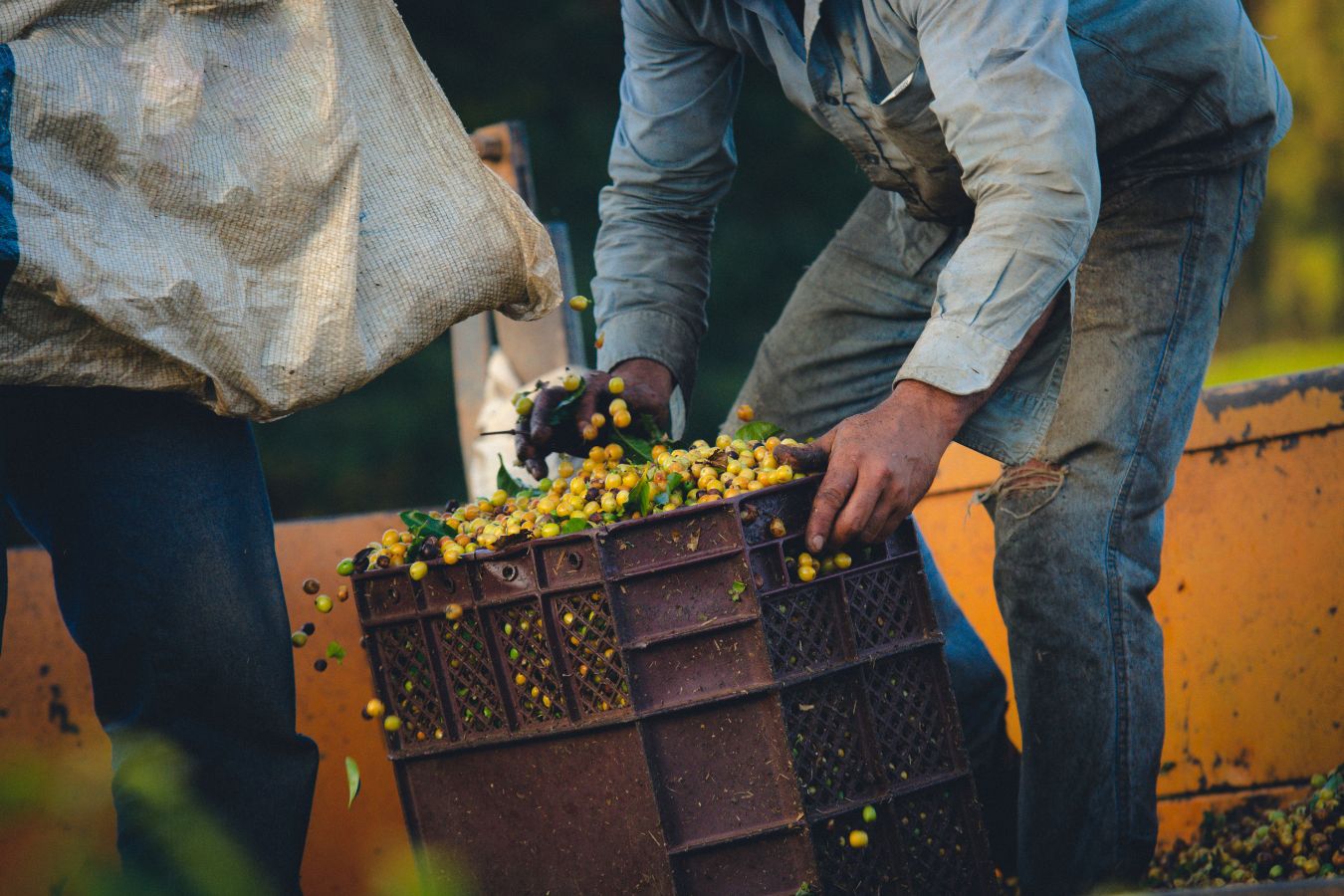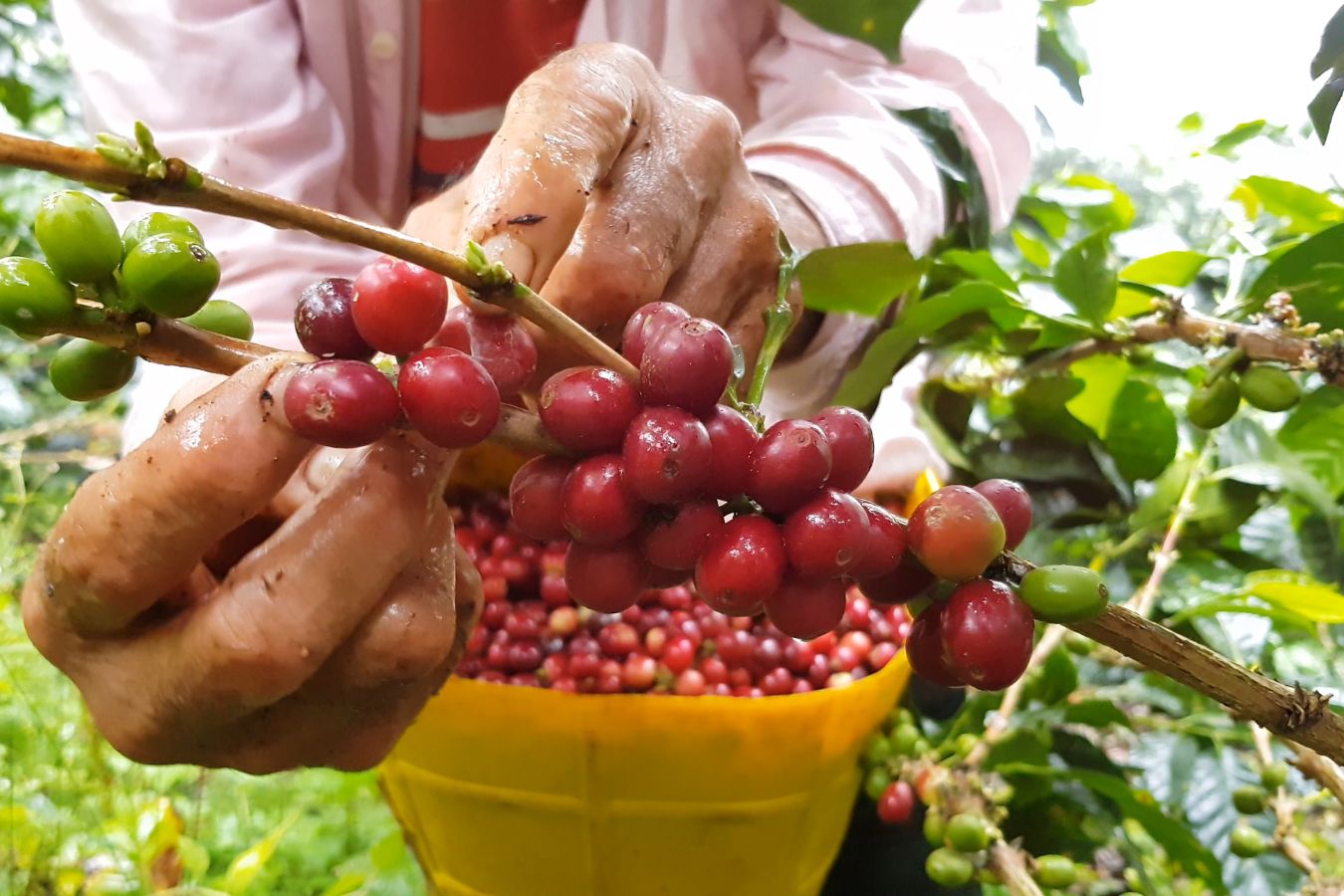
Vietnam coffee harvest season: Helena Coffee Vietnam discusses how to choose coffee and when to harvest it in Vietnam today. The quality of pure coffee is affected by the analysis of coffee berries when they are picked. People must be careful not to break coffee branches during the coffee harvest season. The production of the following crop will be reduced if you pluck too many leaves, especially those with many leaves and flower buds at the tips of the branches.
Time and a place for coffee harvesting in Vietnam
When is a coffee tree harvested in Vietnam? And How long does it take?
Two years after being planted and well-cared for, it has provided fortune-telling. The majority, however, will produce consistent and copious fruit in the third year.
Central Highlands in Vietnam
- Robusta coffee is harvested in Kom Tum and Gia Lai from October to December. Harvest season spans from November through January in Dak Lak, Dak Nong, and Lam Dong provinces.
- In most cases, Arabica coffee is picked between August and October. Harvest season runs from September to November in Duc Trong and Lam Dong and from December to February in Da Lat.
Choose the best and most appropriate
However, people must examine the coffee berry’s ripeness to select the best harvest period. The color of the coffee can be used to determine the quality of the coffee fruit and the best harvest period. The higher the quality of the green coffee beans, the better the coffee beans.
The skin of completely ripe coffee cherries usually is crimson, and the stem is only slightly green. Pest-free coffee berries are of high quality, making them an excellent raw material for brewing tasty Green coffee berries will have a lot of water without the sugar-containing mucus layer surrounding the kernel.

Because the new silk skin is thin and green, the seed density is relatively low. When coffee is harvested, the kernel ratio is unsatisfactory, the seeds have shrunken, and the water, which has little perfume and a spicy taste, is difficult to drink, even though it is pure coffee.
Overripe fruit: Coffee trees that aren’t harvested promptly develop dark black or brown skin. A sweet sticky film dries up between the silk and the rice husks. This fruit will turn brown after the first processing. Ripe coffee presses are joints in coffee trees deficient in nutrients or dry for an extended period. It can also occur when there are too many fruit coffee clusters on the wrong coffee plants, causing the fruit to be squeezed.
In addition, stem borers appear as yellow coffee fruit packed on trees with fallen leaves or damaged branches. These coffee berries will float to the top when washing fresh coffee with water.
The coffee bean has black skin after it is dried on the tree or falls to the ground, and the coffee bean is frequently attacked by insects or fungi, resulting in poor quality. Borer, sick, and dead branches of coffee berries are plagued with insects. The seeds are usually black or flattened after first processing.
People can categorize the quality of coffee beans based on the primary processing method. When wet coffee is harvested, people look for ripe coffee berries, new hues, and ripe red berries. Green or overripe fruits, as well as black and dry fruits, must be classed separately.
You can harvest coffee without sorting if you dry the beans or improve the bucket harvest. However, if the coffee harvest is devoid of ripe berries, contaminants, or damaged seeds, the quality of this type of pure coffee will undoubtedly suffer.
Method for Selecting Coffee
Coffee cherries are hand-picked when they are 95 percent ripe on the tree. This percentage may be lower towards the conclusion of the season when collecting coffee, the gardener must prepare clean coffee tarpaulins to spread under the tree.
When picking coffee, the objective is to ensure that the fruit does not attach to the soil or come into touch with fallen fruit on the ground. This increases the danger of spreading fungus that causes Ochratoxin A and Aflatoxin B1*h damaging coffee.
Picking coffee should be done with your hands or by rotating the fruit slightly so that it falls on the canvas. Should not be plucked or throughout the branch; in the case of Arabica coffee, plucking the entire cluster will harm the flower shoots below. Care should be taken not to break branches during the coffee-picking process. Damage to many leaves, particularly those with flower buds at the tops of the components, will diminish the output the following season.
Coffee should be harvested according to each tree, and the canvas should be spread out in each row to ensure that no coffee is missed. Coffee gardens that are maturing early must be plucked first. To avoid missing coffee, pick from top to bottom and from the inside out when picking coffee from a tree. It should be brought to the primary processing location about 12 hours after harvesting.

The weather has a significant impact on when coffee is harvested:
Before entering the preliminary processing stage, people should remove pollutants such as soil, leaves, and branches in place them in clean bags, and carry them to the primary processing area. Coffee bags should not be stacked in the yard, and coffee pods should not be kept for more than 24 hours, as this will cause the coffee berries to ferment.
If you haven’t done, spread the coffee out on a clean floor or an excellent net. Coffee cherries should not be distributed more than 30cm thick because this will generate heat and cause the coffee to ferment.
Hand-picking and machine-picking of coffee harvesting
Machine-picking
This method is commonly used in large-scale coffee farms. Consider the amount of maturity on the coffee tree to the required ripeness rate while using machine picking and harvesting. This method of selection will be used with unripe coffee berries.
Hand-picking
In Vietnam, this is the most common way. Picking coffee by hand can be done in two ways: picking through (all branches) or picking selectively.
- Branches must be plucked:
The gardener begins to harvest coffee when the coffee trees are ripe, with a ripening rate of roughly 90 percent to 95 percent. 1 or 2 tarps should cover the coffee’s foundation uniformly.

Spread the canvas out so that it is larger than the tree canopy area so that the coffee beans don’t fall out when selecting them. Coffee pickers begin processing all ripe and unripe fruits in preparation for transport to the preliminary processing area.
- Choosing a Type:
When the coffee on the tree is ready to be picked, the picker brings a basket, basket, basket… or another handy container. Only choose the tree’s ripe redberry seeds. This method of coffee harvesting involves a lot of labor, but in exchange for the exceptional coffee quality and worth, this coffee will be much more valuable.
- Images of coffee harvesting:
Coffee picking is only appropriate for locations where high-quality coffee is produced, such as Arabica Cau Dat… shipping to the United States, making branded coffee, or picking coffee as food for ferrets, resulting in very high-value weasel coffee.
Vietnam Coffee Trade
Vietnamese coffee discounts narrowed this week due to high gasoline prices, shipping rates, and thin trade, while Indonesian coffee discounts increased as some exporters released remaining beans from the previous harvest, traders said on Thursday.
Farmers in Vietnam’s Central Highlands, the country’s largest coffee-growing region, sold coffee for 40,600-41,800 dong ($1.78-$1.83), a slight increase from the previous week’s range of 40,500-42,000 dong. Traders in Vietnam offered 5% black and broken-grade 2 Robusta Coffee Beans at a $330-$340 per tonne discount to the July contract, compared to a $360 deal last week.
“Discounts will remain stable at around $330-$350 per tonne due to high production costs, gasoline prices, and shipping rates,” a coffee belt trader predicted. “Farmers are selling for cash during the watering process, but not in large quantities right now because they expect higher prices.”